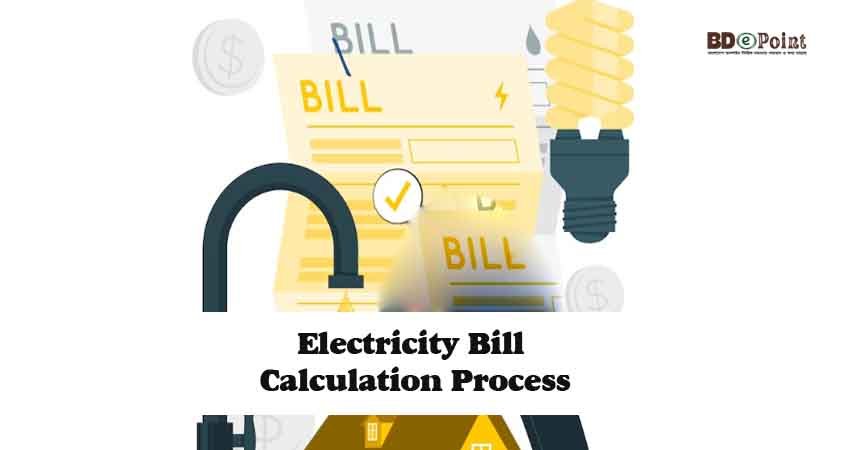Navigating the world of Average Electricity Bill in Australia can often be a bewildering experience, as costs can vary widely based on numerous factors.
Recent findings from Compare the Market’s Bill Shock Tracker survey reveal that nearly half of Australians have encountered unexpected electricity and gas bills in the last three months.
Understanding these costs is vital, and in this guide, we will provide valuable insights into the average electricity bills across Australia.
Electricity Bill in Australia
Electricity bills can often bring unwelcome surprises, and recent findings from Compare the Market’s Bill Shock Tracker survey highlight just how common this experience is among Australians.
Shockingly, 47% of Australians have received an unexpected bill in the last three months, with a staggering 81% of those unexpected shocks attributed to electricity and/or gas bills.

Understanding Average Electricity Bill in Australia, and comparing your bill to the national average can provide valuable insights.
In this guide, we’ll delve into the average electricity bill prices across Australia, offering a state-by-state snapshot, examining gender disparities, pinpointing the age group most affected, and exploring the reasons behind bill shocks.
According to our survey, the average quarterly electricity bill in Australia stands at $411.80, shedding light on the financial landscape of this essential utility expense.
Average Australian Electricity Bill Monthly
Understanding the Average Electricity Bill in Australia monthly expenses is essential for effective budgeting, and one of the most significant regular bills for many Australians is their electricity cost.
To shed light on the financial landscape of energy consumption, here’s a breakdown of the average monthly electricity bills across different states in Australia.
| State | Average monthly cost |
| Queensland | $102.16 |
| New South Wales | $104.41 |
| ACT | $167 |
| Victoria | $107.50 |
| South Australia | $145.67 |
| Tasmania | $170.33 |
| Western Australia | $113.10 |
Average Electricity Bill Yearly in Australia
For many households, one of the most significant annual expenses is their electricity bill. Understanding the average annual electricity costs across different states in Australia is vital for financial planning.
Let’s delve into the Average Electricity Bill in Australia for different states to help you better anticipate and manage your yearly energy expenses.
| State | Average ¢ per kWh | Annual cost |
| Queensland | 21.69 | $1226 |
| New South Wales | 28.72 | $1253 |
| ACT | 26.56 | $2004 |
| Victoria | 27.29 | $1290 |
| South Australia | 34.84 | $1742 |
| Tasmania | 26.67 | $2044 |
Average Cheapest Electricity Bill Australia by State
Understanding the landscape of electricity costs across Australia’s diverse states is crucial for households seeking to manage their energy expenses effectively.
To provide valuable insights, we’ve compiled data from a Canstar Blue survey conducted, based on responses from over 4,400 households.
Please note that these figures are indicative and encompass households of all sizes, serving as a general reference point.
| State | Cheapest Yearly Electricity Bill |
| New South Wales | $1,309 |
| Victoria | $1,122 |
| Queensland | $1,403 |
| South Australia | $1,705 |
| Tasmania | $2,787 |
Average Electricity Bill Australia by Household
When it comes to electricity bills, household size plays a significant role in determining the overall cost.
The consumption patterns and energy needs of a single person or a couple are often vastly different from those of larger families, particularly when considering factors like appliances, lighting, and electronic devices.
To gain a more nuanced understanding of how household size influences electricity expenses, we’ve delved deeper into the data.
| Number of residents | Average Quarterly Electricity Bill |
| 1 | $233 |
| 2 | $284 |
| 3 | $336 |
| 4 | $379 |
| 5 or More | $399 |
Average Electricity Bill in Australia by Household Income
Electricity bills are an essential expense for every household, but the financial burden they impose can vary significantly based on income levels.
In our pursuit of understanding how electricity costs impact different segments of the population, we’ve examined the relationship between household income and average quarterly electricity bills.
| Household Income | Average Quarterly Electricity Bill |
| Less than $30,000 | $250 |
| $30,000 to $49,999 | $267 |
| $50,000 to $79,999 | $281 |
| $80,000 to $119,999 | $323 |
| $120,000 and over | $351 |
Average Electricity Bill Australia by Household Age
When it comes to the cost of electricity, age appears to be a significant factor influencing the magnitude of household bills.
The data we’ve gathered provides intriguing insights into the relationship between age and electricity costs on a national level.
| Age Group | Average Quarterly Electricity Bill |
| 18 to 29 years | $327 |
| 30 to 39 years | $346 |
| 40 to 49 years | $327 |
| 50 to 59 years | $308 |
| 60 to 69 years | $270 |
| 70 years and over | $243 |
Electricity Bill Information Australia
When it comes to assessing your electricity bill in Australia, the process isn’t as straightforward as simply comparing it to the national averages discussed earlier.
Variations in lifestyles, energy usage patterns, and tariff structures can all influence your individual billing statement.
To gain a precise understanding of how your electricity expenses measure up, it’s crucial to scrutinize your most recent utility bill provided by your energy provider.
To know the calculation or any other information related to Electricity in Australia, visit Australia Electricity Information.
Fortunately, your energy bills are designed to offer the insights you need. They typically feature a detailed breakdown, allowing you to compare your kilowatt-hour (kWh) usage with that of households in your vicinity.
FAQs About Electricity Bill in Australia
Here are some important frequently asked questions and answers about Average electricity bill in Australia.
What is the average electricity bill in Australia?
The average electricity bill in Australia can vary significantly depending on factors such as state, household size, income, and age group.
As of the latest available data, the average quarterly electricity bill in Australia is around $411.80.
How does the average electricity bill vary by state?
Electricity bills differ from state to state in Australia. Generally, states like Tasmania and South Australia tend to have higher average electricity bills, while states like Queensland and Western Australia often report lower averages.
How does household size affect electricity bills?
Household size plays a significant role in determining electricity bills. Smaller households, such as single-person or two-person households, typically have lower electricity expenses compared to larger families with more occupants.
Is there a correlation between income and electricity bills?
Yes, there is a correlation between household income and electricity bills. Lower-income households generally pay less for electricity, while higher-income households may have higher bills.
However, this correlation can be influenced by various factors, including the size of the home and energy usage.
How does age impact electricity bills in Australia?
Age can also influence electricity bills. Younger Australians, typically in the 18 to 39 age group, tend to have higher electricity bills, while older individuals, aged 60 and above, often have lower expenses.
This is often due to differences in lifestyle and energy consumption patterns.
How can I check and understand my own electricity bill?
To assess your own electricity bill accurately, carefully review your latest utility bill provided by your energy provider. Look for information that compares your kWh usage to households in your area.
Your bill may include details about household size, the number of occupants, and amenities like pools, all of which can impact your electricity costs.
Are there ways to reduce electricity bills in Australia?
Yes, there are several ways to reduce electricity bills in Australia.
These include using energy-efficient appliances, improving insulation and sealing in your home, monitoring and reducing energy usage, and exploring different energy plans and providers to find the most cost-effective options.
Can I switch energy providers to lower my electricity bills?
Yes, switching energy providers is a common strategy to potentially lower electricity bills. It’s advisable to compare energy plans and providers in your area to find one that offers competitive rates and meets your energy consumption needs.
Final Words
Understanding the Average Electricity Bill in Australia and how it compares to national averages is essential for effective budgeting and managing your household expenses.
Electricity costs can vary significantly based on factors such as your location, household size, income, and age group.
By examining your individual billing statement and considering the insights provided in this guide, you can make informed decisions to optimize your energy consumption and potentially reduce your electricity bills.

